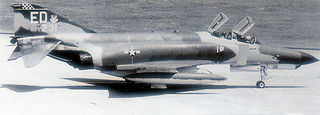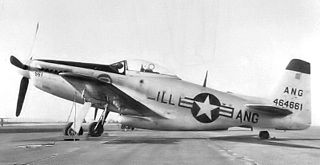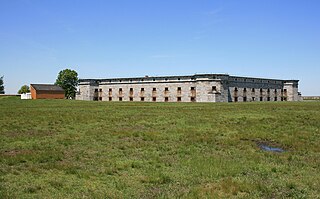 W
WThe 1st Infantry Battalion of the Royal Netherlands East Indies Army was a Dutch colonial military unit that was active in the Dutch East Indies during World War II and the Indonesian National Revolution.
 W
WThe 1st Provisional Marine Brigade was a Marine infantry brigade of the United States Marine Corps (USMC) that existed periodically from 1912 to 1950. It was an ad hoc unit formed for specific operations and not considered a "permanent" USMC unit.
 W
WThe 2nd Northumberland Rifle Volunteer Corps, also referred to as the Tynemouth Rifles, was an infantry unit of Britain's part-time force, the Territorial Army. The corps was raised during the expansion of the Volunteer movement in the 1850s and then served with the Territorial Force during the First World War. It converted to an anti-aircraft role just prior to Second World War, and continued to serve until it was amalgamated in 1950.
 W
WThe 21st Division was a short-lived division of the Chinese People's Liberation Army which was in service both during and after the Chinese Civil War. The division was created in June 1949 by the Regulation of the Re-Designations of All Organizations and Units of the Army, issued by Central Military Commission on November 1, 1948, being formed from the People's Liberation Army 5th Independent Brigade. The division's history can be traced to 2nd Independent Brigade of the Jinzhong Military District, formed in October 1948.
 W
WThe 54th Tactical Fighter Wing is an inactive United States Air Force unit. Its last assignment was with the Pacific Air Forces Fifth Air Force, being stationed at Kunsan Air Base, South Korea. It was inactivated on 31 October 1970.
 W
WThe 55th Fighter Wing is a disbanded unit of the United States Air Force, last stationed at Lockbourne Air Force Base, Ohio. It was withdrawn from the Ohio Air National Guard and inactivated on 31 October 1950 when the Guard adopted the Wing Base organizational model and formed the cadre for the 121st Fighter Wing.
 W
WThe 60th Fighter Wing was a reserve fighter wing of the United States Air Force, stationed at Felts Field, Spokane, Washington from 1947-1950. It was withdrawn from the Washington Air National Guard and inactivated on 31 October 1950.
 W
WThe 61st Fighter Wing is a disbanded unit of the United States Air Force, last stationed at Hayward Municipal Airport, Hayward, California. It was withdrawn from the California Air National Guard and inactivated on 31 October 1950.
 W
WThe 62d Fighter Wing is a disbanded unit of the United States Air Force, last stationed at Van Nuys Airport, Van Nuys, California. It was withdrawn from the California Air National Guard and inactivated on 31 October 1950.
 W
WThe 63d Fighter Wing is a disbanded unit of the United States Air Force, last stationed at Ellington Field, Houston, Texas. It was withdrawn from the Texas Air National Guard and inactivated on 11 October 1950.
 W
WThe 66th Fighter Wing is a disbanded unit of the United States Air Force, last stationed at Chicago Municipal Airport, Illinois. It was withdrawn from the Illinois Air National Guard and inactivated on 31 October 1950.
 W
WThe 71st Fighter Wing is a disbanded unit of the United States Air Force, last stationed at Lambert Field, St. Louis, Missouri. It was withdrawn from the Missouri Air National Guard and inactivated on 31 October 1950.
 W
WThe 52nd (Lowland) Infantry Division was an infantry division of the British Army that was originally formed as the Lowland Division, in 1908 as part of the Territorial Force. It later became the 52nd (Lowland) Division in 1915. The 52nd (Lowland) Division fought in the First World War before being disbanded, with the rest of the Territorial Force, in 1920.
 W
WThe 106th Infantry Division was a division of the United States Army formed for service during World War II. Two of its three regiments were overrun and surrounded in the initial days of the Battle of the Bulge, and they were forced to surrender to German forces on 19 December 1944. The division was never officially added to the troop list following the war, despite having been almost completely organized in Puerto Rico by 1948; subsequently, the War Department determined the division was not needed and inactivated the division headquarters in 1950.
 W
WThe 115th Field Regiment was a part-time unit of Britain's Royal Artillery (RA), raised as part of the Territorial Army (TA) just before the outbreak of World War II. It served in the Battle of France and the Burma Campaign, and in the postwar TA.
 W
WThe Kent Fortress Royal Engineers (KFRE) was a volunteer Territorial unit of the British Army that saw service in both World Wars. They are notable for their successful actions in May 1940, when they destroyed substantial oil stocks and installations just ahead of the German advance, and in August 1944 during the assault crossing of the River Seine.
 W
WThe Kent Fortress Royal Engineers (KFRE) was a volunteer Territorial unit of the British Army that saw service in both World Wars. They are notable for their successful actions in May 1940, when they destroyed substantial oil stocks and installations just ahead of the German advance, and in August 1944 during the assault crossing of the River Seine.
 W
WThe 115th Field Regiment was a part-time unit of Britain's Royal Artillery (RA), raised as part of the Territorial Army (TA) just before the outbreak of World War II. It served in the Battle of France and the Burma Campaign, and in the postwar TA.
 W
WThe Kent Fortress Royal Engineers (KFRE) was a volunteer Territorial unit of the British Army that saw service in both World Wars. They are notable for their successful actions in May 1940, when they destroyed substantial oil stocks and installations just ahead of the German advance, and in August 1944 during the assault crossing of the River Seine.
 W
WThe 1st Middlesex Engineers was the senior engineer unit of Britain's Volunteer Force, raised in 1860 and originally recruited from the South Kensington Museum. It provided Royal Engineers (RE) units to the 47th Division, the 47th (London) Infantry Division, the 56th (London) Divisions, and the 60th Division during both World Wars. The engineers served on the First World War's Western Front from 1915 to 1918, and in a number of theatres during the Second World War. It also served in the postwar Territorial Army, until 1967.
 W
WThe 1st Middlesex Engineers was the senior engineer unit of Britain's Volunteer Force, raised in 1860 and originally recruited from the South Kensington Museum. It provided Royal Engineers (RE) units to the 47th Division, the 47th (London) Infantry Division, the 56th (London) Divisions, and the 60th Division during both World Wars. The engineers served on the First World War's Western Front from 1915 to 1918, and in a number of theatres during the Second World War. It also served in the postwar Territorial Army, until 1967.
 W
WThe Royal Devon Yeomanry was a Yeomanry regiment of the British Army, formed in 1920. It participated in the Second World War and now forms a squadron of the Royal Wessex Yeomanry.
 W
WThe North Scottish Royal Garrison Artillery and its successors were Scottish part-time coast defence units of the British Army from 1908 to 1961. Although the unit saw no active service, it supplied trained gunners to siege batteries engaged on the Western Front during World War I.
 W
WThe 5th Battalion, Devonshire Regiment, was a part-time unit of the British Army recruited in the county of Devon. It was formed in the Territorial Force in 1908 by amalgamating two existing Volunteer Battalions of the Devonshire Regiment. The battalion served in India and fought in Palestine and on the Western Front during World War I. In World War II it provided two anti-tank artillery units, which served in Tunisia, Italy and North West Europe. They were both merged into other Devonshire units in 1950.
 W
WThe Pembroke Royal Garrison Artillery was a part-time unit of the British Army that defended the coast of West Wales during both world wars. Although it never saw action in its coastal defence role, it manned a number of siege batteries of heavy howitzers for service on the Western Front and Italian Front in World War I.
 W
W98th Heavy Anti-Aircraft Regiment, Royal Artillery, was an air defence unit of Britain's Territorial Army (TA) formed in Gloucestershire during the period of international tension leading up to the outbreak of World War II. It defended aircraft factories during the Battle of Britain, then the city of Manchester during the Blitz. It later served in the campaign in North West Europe. The regiment continued in the postwar TA until amalgamated in 1955.
 W
W100th Heavy Anti-Aircraft Regiment, Royal Artillery, was a Scottish air defence unit of Britain's Territorial Army (TA) formed at Motherwell during the period of international tension leading up to the outbreak of World War II. It defended Glasgow during the early part of the war and then took part in the assault landings in Sicily and on mainland Italy. The regiment continued in the postwar TA until amalgamated in 1950.
 W
WThe 32nd Light Anti-Aircraft Regiment, Royal Artillery, was a Scottish air defence unit of Britain's Territorial Army (TA) during World War II. After serving with Anti-Aircraft Command in the defence of the UK, it went to Malta and served for two years in the defence of the besieged island. It then landed in Normandy in August 1944 and fought through the campaign in North West Europe, notably at the Siege of Dunkirk, where it was used in a siege gun role, and in the crossing of the Rhine, until VE Day. The regiment was reformed in the postwar TA but was amalgamated with other Scottish anti-aircraft units in 1950.
 W
WThe 40th Light Anti-Aircraft Regiment, Royal Artillery, was a Scottish air defence unit of Britain's Territorial Army (TA) during World War II. After serving with Anti-Aircraft Command in the defence of the UK, it joined 51st (Highland) Infantry Division and served with it at Alamein, in Tunisia and Sicily. It landed in Normandy on D + 1 and fought through the campaign in North West Europe, including the crossing of the Rhine, until VE Day. The regiment was reformed in the postwar TA but was amalgamated with other Scottish anti-aircraft units in 1950.
 W
WThe 1st Middlesex Engineers was the senior engineer unit of Britain's Volunteer Force, raised in 1860 and originally recruited from the South Kensington Museum. It provided Royal Engineers (RE) units to the 47th Division, the 47th (London) Infantry Division, the 56th (London) Divisions, and the 60th Division during both World Wars. The engineers served on the First World War's Western Front from 1915 to 1918, and in a number of theatres during the Second World War. It also served in the postwar Territorial Army, until 1967.
 W
WThe 2nd Northumberland Rifle Volunteer Corps, also referred to as the Tynemouth Rifles, was an infantry unit of Britain's part-time force, the Territorial Army. The corps was raised during the expansion of the Volunteer movement in the 1850s and then served with the Territorial Force during the First World War. It converted to an anti-aircraft role just prior to Second World War, and continued to serve until it was amalgamated in 1950.
 W
W70th (Sussex) Searchlight Regiment Royal Artillery was an air defence unit of Britain's Territorial Army (TA) raised just before the outbreak of World War II, which served as part of Anti-Aircraft Command during and after the war.
 W
W75th (Middlesex) Searchlight Regiment, Royal Artillery was an air defence unit of Britain's Territorial Army (TA) raised just before the outbreak of World War II and served as part of Anti-Aircraft Command in the early part of the war. Later, it changed role and served in Sicily and Italy, and reformed in AA Command after the war.
 W
WThe 2nd Glamorganshire Artillery Volunteers was a part-time unit of the British Army that defended the coast of South Wales from 1890 to 1942. Although it never saw action in its coastal defence role, it formed several siege batteries of heavy howitzers for service on the Western Front and Italian Front in World War I.
 W
WThe City of London Rifles (CLR) was a volunteer regiment of the British Army, originally raised as the 'Printers' Battalion'. It saw a great deal of action as an infantry regiment in World War I. During World War II it served in the air defence role, first as a searchlight regiment in the United Kingdom, and later as an anti-aircraft artillery regiment in North West Europe.
 W
WThe Lovat Scouts was a British Army unit first formed during the Second Boer War as a Scottish Highland yeomanry regiment of the British Army. They were the first known military unit to wear a ghillie suit and in 1916 formally became the British Army's first sniper unit, then known as "sharpshooters". It served in the First World War and the Second World War and today forms A Company within the 2nd Battalion, 51st Highland Volunteers.
 W
WThe 766th Independent Infantry Regiment was a light infantry unit of North Korea's Korean People's Army (KPA) that existed briefly during the Korean War. It was headquartered in Hoeryong, North Korea, and was also known as the 766th Unit. Trained extensively in amphibious warfare and unconventional warfare, the 766th Regiment was considered a special forces commando unit. The regiment was trained to conduct assaults by sea and then to lead other North Korean units on offensive operations, to infiltrate behind enemy lines, and to disrupt enemy supplies and communications.
 W
WThe 59th Medical Wing (MDW) is the U.S. Air Force's largest medical wing and is the Air Force functional medical command for Joint Base San Antonio (JBSA). It comprises seven medical groups across San Antonio. Three are located at the Wilford Hall Ambulatory Surgical Center (WHASC); the 959th Medical Group is located at San Antonio Military Medical Center (SAMMC), JBSA-Fort Sam Houston; the 59th Training Group - the wing's newest group, activated on 4 January 2016, is also located at JBSA-Fort Sam Houston. The 359th and 559th Medical Groups are located at and support the missions of JBSA-Randolph and JBSA-Lackland, respectively.
 W
WThe Colonial Reserve Corps was an arm of the Royal Netherlands East Indies Army and an important recruitment depot. The Corps existed from 1890 to 1951 and was located in the Prins Hendrikbarracks in Nijmegen.
 W
WThe Cyprus Regiment was a military unit of the British Army. Created by the British Government during World War II, it was made up of volunteers from the Greek Cypriot, Turkish Cypriot, Armenian, Maronite and Latin inhabitants of Cyprus, but also included other Commonwealth nationalities.
 W
WThe Governor General's Bodyguard was a cavalry regiment of the British Indian Army. The regiment was, in effect, the Indian equivalent of the Household Cavalry of the British Army.
 W
WThe Harbor Defenses of the Delaware was a United States Army Coast Artillery Corps harbor defense command. It coordinated the coast defenses of the Delaware River estuary from 1897 to 1950, beginning with the Endicott program. These included both coast artillery forts and underwater minefields. The areas protected included the cities of Philadelphia, Camden, and Wilmington along with the Chesapeake & Delaware Canal. The command originated circa 1896 as an Artillery District and became the Coast Defenses of the Delaware in 1913, with defenses initially at and near Fort Delaware on Pea Patch Island near Delaware City. In 1925 the command was renamed as a Harbor Defense Command. During World War II the defenses were relocated to Fort Miles on Cape Henlopen at the mouth of the Delaware Bay.
 W
WNo. 18 Squadron was a joint Dutch and Australian bomber squadron of World War II. Formed in April 1942, the squadron was staffed by a mixture of Dutch and Australian personnel and placed under Royal Australian Air Force operational command. Initially it undertook anti-submarine patrols on the east coast of Australia, before moving to northern Australia and taking part in operations against the Japanese in the islands of the Netherlands East Indies (NEI). At the conclusion of hostilities, the squadron came under Dutch control and Australian personnel were transferred out. The squadron then undertook operations during the Indonesian National Revolution, before eventually being disbanded in July 1950 after being transferred to Indonesia.
 W
WThe Prins Hendrik Barracks are former barracks in the Netherlands city Nijmegen.
 W
WThe Royal Indian Navy (RIN) was the naval force of British India and the Dominion of India. Along with the Presidency armies, later the Indian Army, and from 1932 the Indian Air Force, it was one of the Armed Forces of British India.
 W
WThe Royal Netherlands Indies Army was the military force maintained by the Kingdom of the Netherlands in its colony of the Netherlands East Indies, which is now Indonesia. The KNIL's air arm was known as the Militaire Luchtvaart-KNIL. Elements of the Royal Netherlands Navy were also stationed in the Netherlands East Indies.